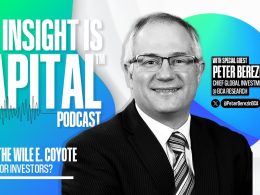10 for '13
by Neuberger Berman Investment Strategy Group
Last year, despite the noise surrounding the U.S. elections and the ongoing European debt crisis, the main drivers of asset prices arguably were the large-scale bond-buying programs put in place by global central banks to alleviate systemic pressures. In 2013, we anticipate fewer aggressive central bank actions as the pace of global growth gradually picks up. We believe the largest influential factors to our outlook are premature fiscal tightening in the U.S. and a potential resurgence of eurozone problems.
1. U.S. Fiscal Blues Amid Broadening Growth
While measures to address U.S. fiscal deficits, such as tax increases and spending reductions, may put a drag on growth in the first half of the year, we anticipate that the expansion will continue to broaden as consumer deleveraging draws closer to an end. We are looking for U.S. real GDP growth between 1.5% and 2%, and a concomitant reduction in the unemployment rate, but do not expect unemployment to drop below 7% by year end. A reduction in legislative uncertainty in the second half of the year may, however, encourage increased business spending.
2. A Bargain—But Far From Grand
The fiscal cliff fight delivered on the expected fireworks in Washington, DC, but delayed spending reductions until March 1, 2013. We believe that, following another acrimonious fight, a deal to avoid "sequestration" (i.e., spending reductions of around $100 billion in 2013) will be in place by the deadline along with an increase in the debt ceiling. Major reforms to politically popular entitlement programs will be much harder to achieve, and we believe it is likely that Congress will "kick the can down the road" yet again.
3. Europe: Reconcilable Differences
Economic contractions in the eurozone likely troughed in the final quarter of 2012 and growth should recover at a lackluster pace in the latter half of this year. As in 2012, we believe growth in "core" European countries will outpace "peripheral" countries by a wide margin in 2013 due to ongoing fiscal austerity measures. While an agreement on unified banking supervision was reached at the end of 2012, progress on achieving greater fiscal union in the eurozone is likely to prove more challenging. Parliamentary elections in Italy and Germany are likely to dominate headlines but the results should solidify the eurozone’s resolve to remain together.
4. Monetary Easing Sustained
If 2012 was a year of global monetary easing, we envision 2013 being one in which central banks will pause to assess growth in their economies. Although some observers expect the U.S. Federal Reserve to end the bond buying programs mid-year, we believe they are likely to remain in place as the impact of fiscal consolidation weighs on employment. We look for excess liquidity to support risk assets and believe it is unlikely to stoke runaway inflation as commodity prices, wage gains and home prices stay muted.
5. Souring on "Safe Haven" Assets
As global growth rebounds, we expect investors to begin finding less appeal in safe haven assets such as U.S. Treasuries and German Bunds. Recent, unprecedented tailwinds for these assets, such as the expansion of central banks’ unconventional policies, large foreign purchases from Europe and the excessive risk aversion of U.S. investors, are likely to begin to reverse course as real interest rates inch up, potentially impacting a host of fixed income products.
6. Chinese Growth Reignites Amid Gradual Reforms
We anticipate a reacceleration in Chinese growth from the lows of 7.4% to slightly above 8%, far below historical levels in the low teens. While we believe the Chinese yuan will appreciate slowly, as in years past, consistent with the government’s objective to liberalize the economy further, investors should temper expectations for major legislative overhauls during the year. We think it is more likely that incoming leadership will opt for a gradual approach to implementing reforms to reduce the country’s reliance on infrastructure investments and exports.
7. Emerging Markets: Buy Small, Buy Local
Many emerging markets are experiencing strong growth in their middle classes. As a result, domestic consumption should be a major economic driver for many of these economies at a time when the developed world continues to struggle. Since multinational financials and commodity producers dominate many of these countries’ stock indices, we anticipate that investors will increasingly veer away from benchmark indices, seeking out smaller-cap companies that offer more direct access to domestic consumption.
8. U.S. Equities Stay Positive
The difference in the cost of capital between the S&P 500 Index (forward earnings yields of 7.2%*) and investment-grade corporate bonds (yield to maturity of 2.1%*) is at one of the highest levels in history. We anticipate that corporate management teams will continue to return capital to shareholders through dividends, buybacks and deal activity. S&P 500 earnings growth projections for 2013 may decline from current levels of 10%, but we think there is still room for gains through multiple expansion. We have a modest return outlook for equities—consistent with our strategic guidelines.
9. Commodity Prices Stay in Check
As global growth rebounds, commodity demand should also increase. Nevertheless, years of high prices have resulted in higher production capacity, potentially putting a lid on future price increases. Particularly in the U.S., increased energy production should keep oil prices contained. Outside the U.S., however, Brent prices will be more susceptible to geopolitical events, such as potential regime change in Venezuela, Syria or Iran. As in 2012, agriculture products could see price volatility associated with erratic weather patterns. Overall, we expect commodities to trade sideways with the potential to surprise on the upside.
10. Cyclicals to Lead
Consistent with the view that growth outside the U.S. will accelerate, sectors such as energy, technology and industrials, which did not fare as well in 2012, could lead the pack in 2013. These sectors generally have more foreign exposure, trade at lower multiples and can benefit from secular trends such as increasing U.S. oil/gas production. Nevertheless, we do see cause for concern, for example, in pullbacks in defense spending, which might affect sectors such as industrials.
*Data as of January 4, 2013
Copyright © Neuberger Berman Investment Strategy Group












